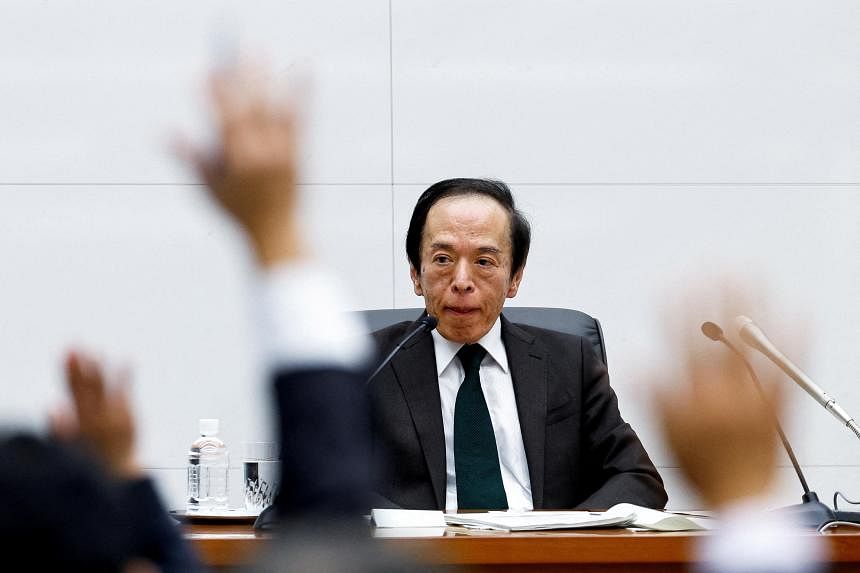TOKYO – Consumer price growth in Tokyo moderated while staying well above the central bank’s inflation target, keeping the authorities on track to consider more interest rate increases after they hiked earlier in March for the first time since 2007.
Prices excluding fresh food rose 2.4 per cent in March in the capital, slowing slightly from 2.5 per cent in February, the Ministry of Internal Affairs said on March 29. The reading matched economists’ estimates. Tokyo’s figures serve as a leading indicator of the national data to be announced on April 19.
The consumer inflation data for Japan’s capital comes little more than a week after the Bank Of Japan (BOJ) closed the door on its negative interest rate while pledging to keep policy settings accommodative for a spell. Even with the deceleration, the data will likely keep market attention focused on potential further rate hikes by the bank, with a majority of economists surveyed by Bloomberg predicting another rate increase by October.
A deeper measure of the inflation trend that strips out fresh food and energy prices slowed to 2.9 per cent, in line with the consensus estimate. Service price gains slowed to 2 per cent from 2.1 per cent in the previous month. BOJ governor Kazuo Ueda has cited service price trends as something he is watching closely.
Agreements to lift wages “from this year’s pay negotiations have been quite strong”, said Itochu Research Institute research associate Moe Nakahama. “Service prices will rise going forward, supported by accelerating increase in labour costs.”
Adding to the case for further hikes is the yen, which weakened on March 27 to a 34-year low versus the dollar, prompting a blast of verbal warnings from government officials intent on putting a floor under the currency.
The weak yen will keep up price pressure stemming from imports. Mr Ueda said last week that the decision to lift the policy rate was partly driven by concerns that waiting too long might compel the authorities to raise rates rapidly.
BOJ board member Naoki Tamura this week signalled his desire to gradually keep raising interest rates as the bank further pursues policy normalisation, noting that keeping policy easy is not inconsistent with another hike. “The continuation of an easy financial environment doesn’t mean there won’t be any more rate hikes at all,” he said.
The BOJ’s board will next convene in April, when it will update its price outlook. In its latest report from January, the bank projected the country’s consumer prices would rise by 2.4 per cent in the fiscal year beginning in April before growth slows to 1.8 per cent in the following year.
In a March 29 report, energy prices declined at a slower pace than in previous months, pushing up inflation. Factors weighing on inflation included costs for processed foods, which advanced at a slower pace than in previous months.
One factor that could spur price gains in coming months is the end of fuel subsidies. Japanese Prime Minister Fumio Kishida’s government is preparing to stop providing subsidies for electricity and gas charges from June, after halving them in May, according to a report by media outlet NHK. The measures that Mr Kishida implemented in early 2023 have weighed on national inflation by as much as 1 percentage point over the year.
“Energy prices will be pushed up substantially in stages,” Itochu researcher Nakahama said. “National inflation will slow to the mid-2 per cent for a time, then accelerate back to the upper 2 per cent.”
In other data, retail sales gained 4.6 per cent in February from a year earlier. Industrial output fell 0.1 per cent in February versus the previous month, a weaker result than the consensus estimate of 1.3 per cent growth. Signs of fragility in the manufacturing sector could keep the BOJ cautious as it plots its policy course in 2024.
A separate set of data showed tightness in the labour market easing slightly in February. The Labour Ministry reported that the unemployment rate rose to 2.6 per cent in February, and the job-to-applicants ratio moderated to 1.26. Still, more than half of surveyed companies said they face a shortage of permanent employees, the highest level since 2018, according to a separate report by Teikoku Databank.
The authorities are hopeful that wage gains spurred in part by the nation’s chronic labour shortage may support a recovery in consumers’ appetite for spending. Japan’s biggest umbrella group of labour unions, Rengo, said in March that companies agreed in negotiations to give 5.3 per cent wage gains in the coming fiscal year, the biggest in more than 30 years and much higher than analysts had forecast.
Whether the momentum will continue hinges on whether this upward wage trend will spill over to small and medium-sized firms, which employ 70 per cent of Japan’s workers. The results of pay talks that include more smaller businesses will be released in April. BLOOMBERG

